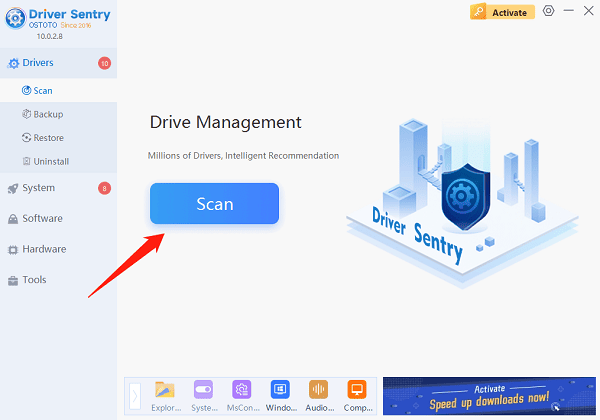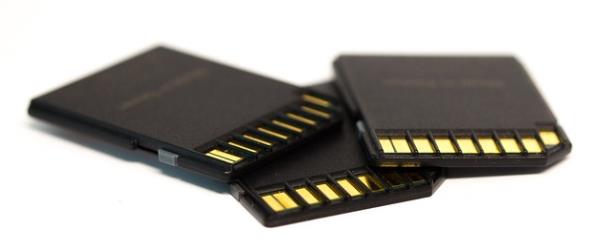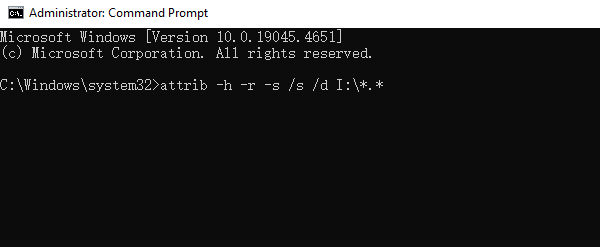
When using an SD card for photos, videos, and files, you may encounter it showing 0 bytes. This article provides solutions to fix the issue and recover your data safely.
Routine Computer Maintenance
Outdated, damaged, or incompatible drivers can lead to performance drops, hardware malfunctions, or system crashes on your computer. It's recommended to use Driver Sentry to automatically detect and update drivers, saving time and effort while avoiding the risk of downloading or installing incorrect drivers.
Click the download button to get the latest version of Driver Sentry. After installation, open the software and click "Scan".

Once the scan is complete, you'll see which drivers need to be installed or updated. Find the drivers needing updates in the results list, then click "Upgrade".
After updating, it's best to restart your computer to ensure the new drivers work correctly.
Why Does an SD Card Show 0 Bytes
The file system on the SD card (e.g., FAT32, exFAT) may become corrupted due to improper handling, incorrect ejection, or system crashes, which can make files inaccessible.
Physical damage, power loss, or improper insertion and removal can prevent the SD card from functioning correctly.
An unstable connection between the SD card, the card reader, or the computer may make data unreadable.
Certain malware may hide files on the SD card, causing the file system to show 0 bytes.
1. Check the SD Card and Card Reader Connection
Ensure the SD card is fully inserted into the card reader. If not seated properly, it may not be recognized.
The card reader itself may have connection issues, preventing it from reading the SD card. Try using a different reader or a different USB port to see if that resolves the issue.
Examine the SD card's surface for visible scratches, cracks, or dirt, which can hinder reading. If there's physical damage, it may be time to replace the SD card.

2. Replace the SD Card Reader
If you're confident the SD card is intact but still unreadable, try using a different card reader or plugging it into another device. If the new reader can detect the SD card, the problem likely lies with the original reader.
3. Unhide Files on the SD Card
Connect the SD card to your computer.
Search for Command Prompt in the search bar and open it as an administrator.
In the Command Prompt window, type the following command and press Enter: attrib -h -r -s /s /d I:\*.*

Replace "I" with the actual drive letter of your SD card.
After executing the command, check if your SD card still shows 0 bytes.
4. Run the CHKDSK Command
Type "cmd" in the Start menu search bar, right-click on "Command Prompt", and select "Run as administrator".
Type the following command in the Command Prompt and press Enter: chkdsk X: /f
Replace "X" with the drive letter of your SD card.
CHKDSK will scan the SD card and repair any file system errors. This process may take some time, depending on the card's capacity and the extent of damage.
5. Scan the SD Card for Viruses
After connecting the SD card to the computer, run your antivirus software and select the SD card for a scan. Viruses can cause file system damage or data loss.
If any viruses are found, follow the prompts to delete them, and consider using file recovery tools to attempt to restore any lost files.
6. Format the SD Card
Open "This PC", right-click on the SD card drive, and choose "Format".
Choose FAT32, exFAT, or NTFS as the file system (usually, SD cards are formatted to FAT32 or exFAT).
Click "Start" to begin formatting, which will clear all data on the SD card and create a new file system.
After formatting, you can use data recovery software (like Recuva or EaseUS) to attempt to recover deleted files.
Using these methods, you can effectively resolve the issue of an SD card showing 0 bytes. If the problem persists, consider replacing the SD card.
See also:
Guide to Connecting a Laptop to Dual Monitors
8 Ways to Fix Hogwarts Legacy Stuttering